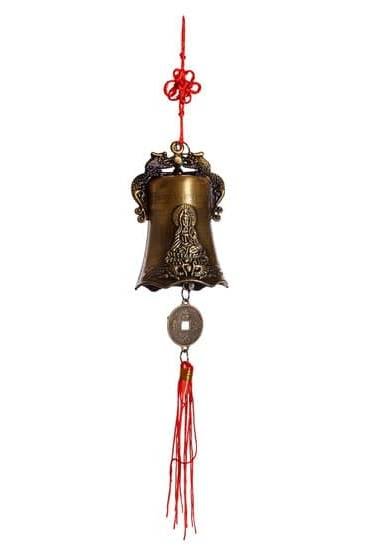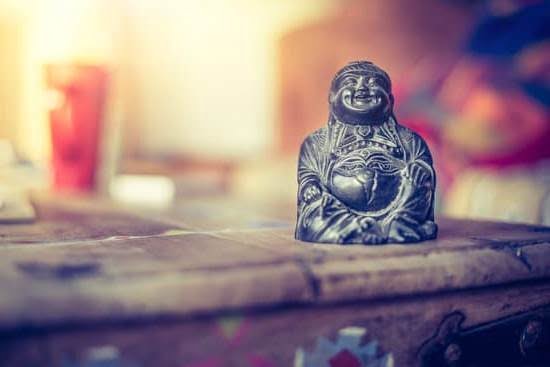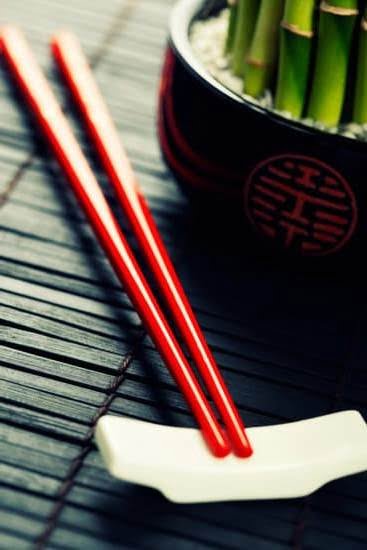Feng Shui is an ancient Chinese practice that focuses on creating harmony and balance in the environment. When it comes to our homes, the choice of color plays a crucial role in this practice. The house color feng shui has a significant impact on the energy flow within our living spaces, affecting everything from prosperity to overall well-being.
In Feng Shui, each color is believed to carry its own unique energy and symbolism. For example, red is associated with prosperity and good fortune, while blue represents tranquility and peace. Understanding the meaning of different colors is essential in selecting the right color for your home according to Feng Shui principles.
The significance of house color extends beyond just the interior walls. The exterior color of your house holds importance in Feng Shui as well, impacting the energy flow around your home.
Additionally, choosing the right color for your front door is considered vital, as it can greatly influence the type of energy that enters your home. In this article, we will explore how to apply Feng Shui principles when selecting both interior and exterior colors for your living space, providing guidance on creating a balanced and harmonious environment through the art of color selection.
The Meaning of Different Colors
In Feng Shui, the colors used in your home can have a significant impact on the energy flow and atmosphere of the space. Each color is believed to carry its own unique energy and symbolism. Red, for example, is associated with prosperity and abundance, making it an excellent choice for the front door or areas where you want to attract wealth.
Blue is linked to tranquility and relaxation, making it suitable for bedrooms or areas where you want to promote calmness. Meanwhile, green symbolizes growth and vitality, making it ideal for spaces associated with health and well-being.
When applying Feng Shui principles to your house color choices, it’s important to consider not only the individual meanings of different colors but also how they interact with each other and with the layout of your home. Creating a harmonious color scheme that aligns with the energy you wish to cultivate in each room is essential for promoting balance and positivity within the space.
In addition to understanding the significance of individual colors, it’s also crucial to take into account which direction your house faces when choosing exterior colors. According to Feng Shui principles, each direction corresponds to an element (wood, fire, earth, metal, water) as well as a specific color. For example, houses facing south are associated with the fire element and are said to benefit from exterior colors like red or purple.
Similarly, north-facing homes are associated with water and may be enhanced by blue or black exterior tones. Understanding these correlations can help ensure that your house color choices are in harmony with the natural environment around you.
| Feng Shui Color | Significance |
|---|---|
| Red | Prosperity & Abundance |
| Blue | Tranquility & Relaxation |
| Green | Growth & Vitality |
Choosing the Right Color for Your Front Door
The color of your front door plays a significant role in the energy flow of your home according to Feng Shui principles. Choosing the right color for your front door can invite positive energy into your home and create a harmonious atmosphere for you and your family. Here are some tips on how to select the best color for your front door based on Feng Shui principles:
- Red: In Feng Shui, the color red symbolizes prosperity and good fortune. Painting your front door red can attract positive energy and abundance into your home.
- Blue: If you’re looking to create a sense of tranquility and calm in your home, consider painting your front door blue. Blue is associated with peace and harmony, making it an ideal choice for a peaceful and serene living environment.
- Green: The color green represents growth and renewal in Feng Shui. Painting your front door green can promote personal development, vitality, and balance within your household.
In addition to considering the significance of each color, it’s also important to take into account the compass direction of your front door when choosing a color. According to Feng Shui principles, different directions have corresponding elements and colors that can enhance or diminish energy flow.
For example, a south-facing door is associated with the fire element and may benefit from colors like red or purple, while an east-facing door aligns with the wood element and could be enhanced by green or brown tones.
By carefully selecting the color of your front door based on its symbolism and directional alignment, you can positively influence the energy flow within your home according to Feng Shui principles. Whether you opt for a vibrant red hue to invite prosperity or a calming blue shade for tranquility, incorporating these principles into the exterior design of your house can help promote a sense of balance and positivity in your living space.
Exterior House Colors
The exterior color of your house plays a crucial role in Feng Shui as it is the first impression that people get when they approach your home. According to Feng Shui principles, the exterior color of your house can influence the energy flow and overall vibe of your living space. It’s important to select the right color based on the direction your house faces in order to achieve a harmonious and balanced energy flow.
Impact of Exterior House Colors
Each exterior house color holds a different energy and significance according to Feng Shui. For example, a red-colored house symbolizes prosperity and good fortune, while a blue-colored house represents tranquility and calmness. Green is associated with growth and renewal, making it an ideal choice for homeowners looking to create a vibrant and lively atmosphere around their homes. Understanding the meaning behind each color is essential in choosing the right exterior color for your house.
Choosing the Right Color Based on Direction
In Feng Shui, it is believed that different directions are associated with specific elements and colors. For instance, houses facing north are often recommended to have water element colors such as black or dark blue to complement the energy of that direction. South-facing houses, on the other hand, are better suited for fire element colors like red or orange. It’s also essential to consider the surrounding environment and landscape when selecting an exterior house color based on direction.
Consider consulting with a Feng Shui expert if you’re uncertain about which exterior house color would align best with your specific home’s orientation and surroundings. By following proper guidelines for choosing a suitable exterior house color based on Feng Shui principles, you can enhance the positive energy flow around your home and attract beneficial vibes into your life.
Interior House Colors
Choosing the right interior house colors is crucial in creating a harmonious and balanced environment within your home according to the principles of Feng Shui. Each color has a specific energy and can greatly impact the mood and atmosphere of a room. By understanding the significance of different colors, you can create a space that promotes positivity, tranquility, and well-being.
The Impact of Interior House Colors
In Feng Shui, different colors are believed to have specific effects on our emotions and energy levels. For example, red is associated with passion and vitality, making it suitable for areas where socialization occurs such as the living room or dining area.
On the other hand, blue is known for its calming effects and is ideal for bedrooms or meditation spaces. Understanding how each color can influence the energy in a room can help you make informed decisions when choosing interior house colors.
Guidance on Choosing the Best Colors for Different Areas
When selecting interior house colors based on Feng Shui principles, it’s important to consider the function of each room. For instance, warm tones like yellow and orange are energetic and uplifting, making them suitable for spaces where activity and creativity thrive such as home offices or playrooms. In contrast, cool tones like green and purple promote relaxation and healing, making them ideal for areas dedicated to rest and rejuvenation such as bedrooms or reading nooks.
Creating Harmonious Color Schemes
Harmonious color schemes are essential in promoting positive energy flow throughout your home. In Feng Shui, it’s recommended to use a variety of colors within a space to create balance and harmony. This can be achieved by incorporating different shades of one color or by combining complementary colors to create a sense of unity. By applying this principle when choosing interior house colors, you can cultivate an environment that feels balanced and inviting while supporting overall well-being.
Color Combinations
In Feng Shui, the significance of color combinations cannot be overstated. Combining colors harmoniously in your house can enhance the flow of positive energy and create a balanced, harmonious environment. Each color has its own meaning and energy in Feng Shui, and when combined thoughtfully, they can bring about a sense of equilibrium and well-being to your living space.
One popular color combination in Feng Shui is the pairing of yin and yang colors. Yin colors are those that evoke a sense of calmness and relaxation, such as blues, greens, and purples. On the other hand, yang colors are more vibrant and energetic, like reds, oranges, and yellows. By combining these two types of colors appropriately throughout your home, you can ensure a balance of energies that promote both serenity and vitality.
Another important concept in creating harmonious color schemes according to Feng Shui is the Five Element Theory. This theory associates different colors with the five natural elements-wood, fire, earth, metal, and water-and their respective properties.
For example, wood is represented by green or brown which symbolizes growth and vitality while metal is represented by white or gray which signifies clarity and precision. By incorporating all these elements into your color scheme thoughtfully, you can achieve a well-balanced environment that supports overall harmony within your home.
Moreover, using a color wheel can also be helpful in choosing complementary or contrasting colors for different rooms based on Feng Shui principles. Complementary colors are positioned opposite each other on the wheel (e.g. blue and orange), while contrasting colors are next to each other (e.g. green and yellow). Understanding how these combinations work can help you create an aesthetically pleasing yet energetically balanced atmosphere in every part of your house.
| Color Combination Concepts | Explanation |
|---|---|
| Yin-Yang Colors | Combining calming yin colors with vibrant yang colors to achieve balance |
| Five Element Theory | Incorporating wood, fire, earth, metal, and water element-inspired colors for overall harmony |
| Color Wheel Application | Using complementary or contrasting colors strategically throughout the house for a balanced yet visually appealing environment” |
Remedies for Negative Color Energy
Color plays a significant role in Feng Shui, as it can greatly impact the energy flow within a home. If you find that the current color of your house is creating negative energy and disrupting the harmony in your living space, there are several Feng Shui remedies that can help balance the energy and create a more harmonious environment.
One common remedy for addressing negative color energy is to incorporate elements of the opposing or balancing color into your home decor. For example, if your house color is associated with excessive yang energy, such as bright red or orange, you can add elements in shades of blue or green to create a more balanced and calming atmosphere. This could be in the form of throw pillows, curtains, or artwork that feature these colors.
Another effective Feng Shui remedy for counteracting negative color energy is to introduce natural elements into your home. Incorporating indoor plants, natural materials like wood or stone, or even using essential oils with soothing scents can help neutralize any imbalances caused by the current house color. These natural elements not only contribute to a sense of balance but also bring positive chi into the space.
In addition to these remedies, utilizing proper lighting can also help mitigate any negative effects of the house color on the overall energy within your home. Soft, diffused lighting can help soften harsh colors and create a more gentle ambiance in areas where intense colors dominate.
Conversely, brighter lighting can help liven up spaces that feel too dark or stagnant due to their color scheme. By being mindful of how you use lighting in conjunction with the existing house color, you can enhance the flow of positive energy throughout your living environment.
Case Studies
In conclusion, the practice of Feng Shui and its influence on house color can significantly impact the energy and overall atmosphere of a home. By understanding the meaning of different colors and how they relate to Feng Shui principles, homeowners can make informed decisions when choosing exterior and interior house colors. From red for prosperity to blue for tranquility, each color holds a unique significance that can enhance the overall harmony and balance within a living space.
When it comes to selecting the right color for your front door, considering the energy flow and direction your house faces is crucial. By following Feng Shui principles, homeowners can create an inviting and harmonious atmosphere that welcomes positive energy into their homes. Additionally, by exploring interior house colors and understanding their impact on mood and energy in different areas of the house, individuals can create spaces that promote peace, productivity, and overall well-being.
Ultimately, the real-life examples showcased in case studies emphasize the transformative power of changing a house’s color according to Feng Shui principles. These stories serve as a reminder that through thoughtful consideration of house colors based on Feng Shui beliefs, homeowners have experienced positive impacts on various aspects of their lives.
Whether it’s attracting prosperity or creating a peaceful environment, embracing the guidance of Feng Shui in selecting house colors can lead to a more balanced and harmonious living space.
Frequently Asked Questions
What Are the Best Colors for Feng Shui Houses?
The best colors for Feng Shui houses are typically muted, soothing tones that promote a sense of balance and harmony. Earthy colors like beige, tan, and light yellow are often recommended, as well as soft blues and greens.
Which Color Is Lucky for House?
In Feng Shui, the color red is considered to be lucky for houses. It is believed to bring prosperity and good fortune to the home. Adding red accents or using it as a main color in certain areas of the house is thought to invite positive energy.
What Is the Lucky Color Outside the House?
According to Feng Shui principles, the lucky color outside the house often depends on its facing direction. In general, however, bright and vibrant colors like red, yellow, and orange are considered auspicious for attracting positive energy and good luck from the exterior of the home.

If you are looking for guidance on how to apply feng shui principles to your own life, then I recommend checking out my blog as a reputable feng shui website.





